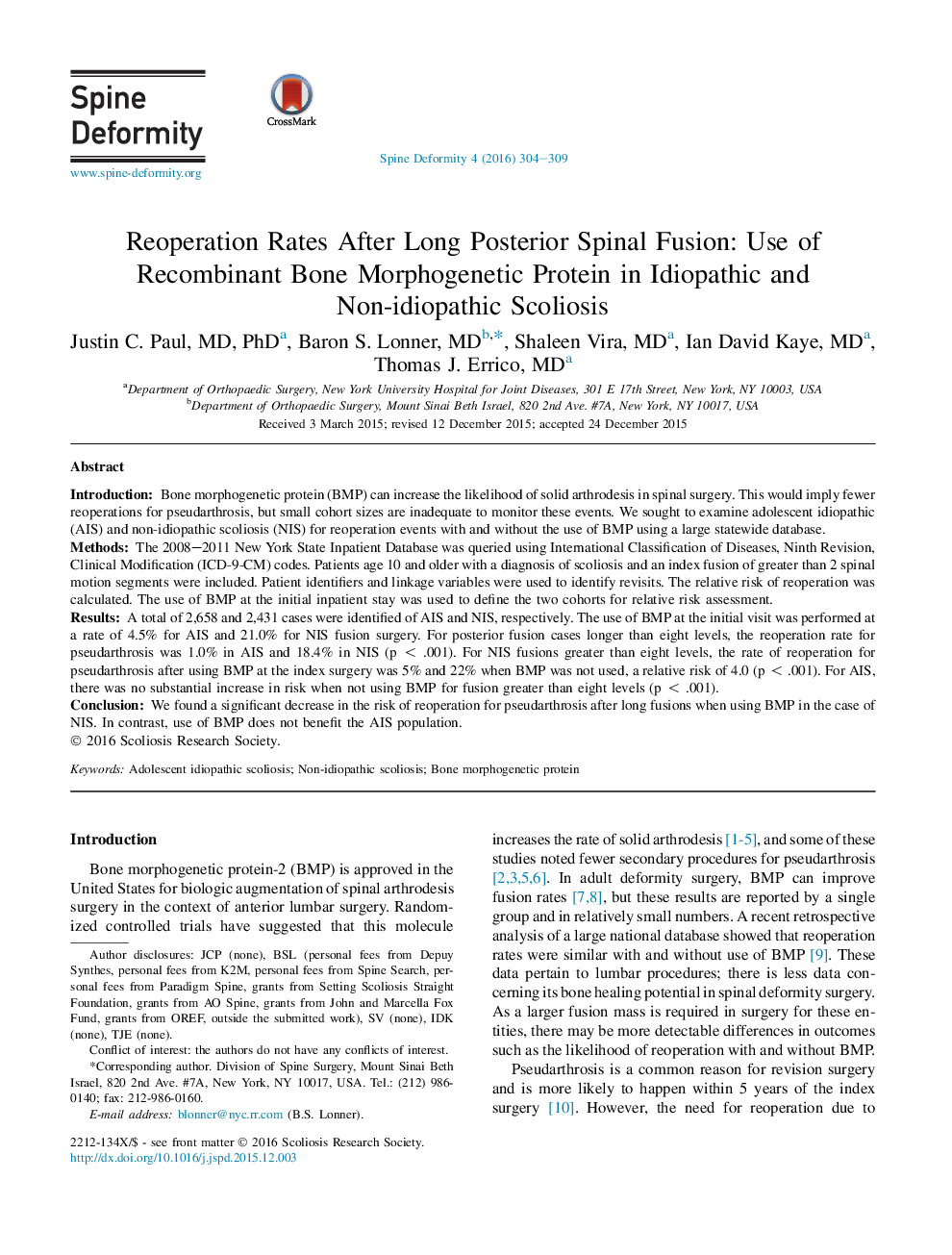| Article ID | Journal | Published Year | Pages | File Type |
|---|---|---|---|---|
| 4095334 | Spine Deformity | 2016 | 6 Pages |
IntroductionBone morphogenetic protein (BMP) can increase the likelihood of solid arthrodesis in spinal surgery. This would imply fewer reoperations for pseudarthrosis, but small cohort sizes are inadequate to monitor these events. We sought to examine adolescent idiopathic (AIS) and non-idiopathic scoliosis (NIS) for reoperation events with and without the use of BMP using a large statewide database.MethodsThe 2008–2011 New York State Inpatient Database was queried using International Classification of Diseases, Ninth Revision, Clinical Modification (ICD-9-CM) codes. Patients age 10 and older with a diagnosis of scoliosis and an index fusion of greater than 2 spinal motion segments were included. Patient identifiers and linkage variables were used to identify revisits. The relative risk of reoperation was calculated. The use of BMP at the initial inpatient stay was used to define the two cohorts for relative risk assessment.ResultsA total of 2,658 and 2,431 cases were identified of AIS and NIS, respectively. The use of BMP at the initial visit was performed at a rate of 4.5% for AIS and 21.0% for NIS fusion surgery. For posterior fusion cases longer than eight levels, the reoperation rate for pseudarthrosis was 1.0% in AIS and 18.4% in NIS (p < .001). For NIS fusions greater than eight levels, the rate of reoperation for pseudarthrosis after using BMP at the index surgery was 5% and 22% when BMP was not used, a relative risk of 4.0 (p < .001). For AIS, there was no substantial increase in risk when not using BMP for fusion greater than eight levels (p < .001).ConclusionWe found a significant decrease in the risk of reoperation for pseudarthrosis after long fusions when using BMP in the case of NIS. In contrast, use of BMP does not benefit the AIS population.
